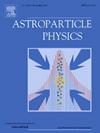We present an overview of recent numerical advances in the theoretical characterization of massive binary black hole (MBBH) mergers in astrophysical environments. These systems are among the loudest sources of gravitational waves (GWs) in the universe and particularly promising candidates for multimessenger astronomy. Coincident detection of GWs and electromagnetic (EM) signals from merging MBBHs is at the frontier of contemporary astrophysics. One major challenge in observational efforts searching for these systems is the scarcity of strong predictions for EM signals arising before, during, and after merger. Therefore, a great effort in theoretical work to-date has been to characterize EM counterparts emerging from MBBHs concurrently to the GW signal, aiming to determine distinctive observational features that will guide and assist EM observations. To produce sharp EM predictions of MBBH mergers it is key to model the binary inspiral down to coalescence in a full general relativistic fashion by solving Einstein’s field equations coupled with the magnetohydrodynamics equations that govern the evolution of the accreting plasma in strong-gravity. We review the general relativistic numerical investigations that have explored the astrophysical manifestations of MBBH mergers in different environments and focused on predicting potentially observable smoking-gun EM signatures that accompany the gravitational signal.


